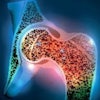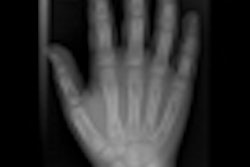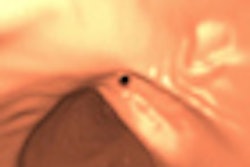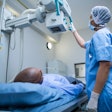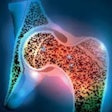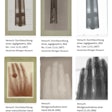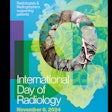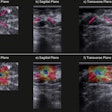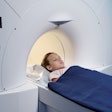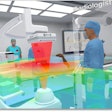
The U.K. College of Radiographers (CoR) has published fresh advice on clinical reporting and preliminary clinical evaluation by radiographers. The contents look certain to be scrutinized by imaging departments across Europe.
The document, which makes it clear that preliminary clinical evaluation must replace "red dot" abnormality signaling systems, provides practical guidance and support for departments currently undertaking radiographer role development, as well as those beginning to implement it. In addition, it contains advice on education, training, and common professional development, standards of practice, clinical governance, as well as accountability and indemnity.
 Too few imaging examinations are reported in a timely way, asserts Audrey Paterson, the CoR's director of professional policy.
Too few imaging examinations are reported in a timely way, asserts Audrey Paterson, the CoR's director of professional policy.
"Changes in healthcare policy and increased pressure on departments to enhance quality, capacity, and productivity, means an increasing number of radiographers are and will continue to be undertaking clinical reporting and initial evaluation," noted the lead author of the document, Audrey Paterson, CoR's director of professional policy. "Too many diagnostic imaging examinations are not reported in a timely way and trained radiographers can go a long way to filling the gap."
The aim is to support the implementation and further growth of clinical reporting by radiographers, according to Jackie Hughes, president of the CoR. She thinks her members' roles will continue to develop -- particularly now the number of radiographer-led clinical reports and evaluations is increasing.
"The college has supported this practice since the 1990s when it first stated that it was not an option for the future, but a requirement," she commented. "Diagnostic radiographers have proved that with the right skills, development, and training they are able to make valuable and valued first-line interpretations and to provide definitive reports for a wide range of examinations, achieving a standard equivalent to their radiologist counterparts. Timely diagnoses are vital to good healthcare outcomes.
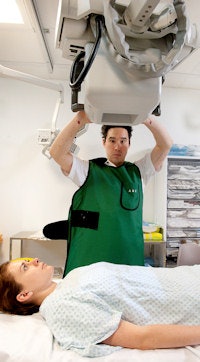 Following an accredited postgraduate education program, radiographers can correctly identify normal chest radiographs and provide a report on abnormal appearances. This and the home page image provided courtesy of Charles Fox/Barts Health National Health Service (NHS) Trust.
Following an accredited postgraduate education program, radiographers can correctly identify normal chest radiographs and provide a report on abnormal appearances. This and the home page image provided courtesy of Charles Fox/Barts Health National Health Service (NHS) Trust.
It is CoR's duty as an organization and as a profession to proactively support this area of practice in order to continue delivering excellent patient care, added Hughes.
Paterson has a strong track record in this field, having undertaken projects for the U.K. Department of Health, the Quality Assurance Agency, the Health Professions Council and the U.K. Radiology Congress. She was a member of the U.K. Council of the Society of Radiographers for 12 years and was president of the organization in 1993-1994. She was the U.K. council member for the International Society of Radiographers and Radiological Technologists (ISRRT) for four years and the steering group coordinator for the World Sonographer Association between 1988 and 1991.
In 2006 the CoR stated that making informed clinical comments on examinations/image interpretation (now referred to as preliminary clinical evaluation) and clinical reporting should become core competencies of the profession. At that time, the CoR asked that radiography education providers include the principles of image assessment and reporting in prequalifying education programs and ensure that, at qualification, radiographers are competent to provide written preliminary comments on imaging examinations, noted a statement from the organization.
In September 2012, the CoR and the Royal College of Radiologists (RCR) jointly published Team working in clinical imaging. This document set the tone for future practice and defines the key components of team working. It can be accessed here.
According to the results of a 2008 survey, more than half of the medical imaging departments that responded said radiographers were undertaking musculoskeletal reporting, with 83% issuing ultrasound reports, noted the CoR in a statement.
For more information and to download the new document, "Preliminary Clinical Evaluation and Clinical Reporting by Radiographers: Policy and Practice Guidance," click here.



